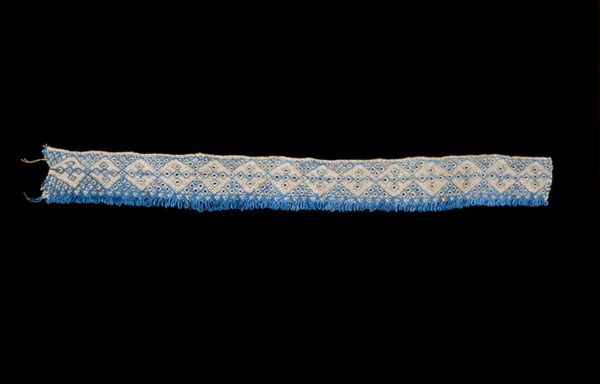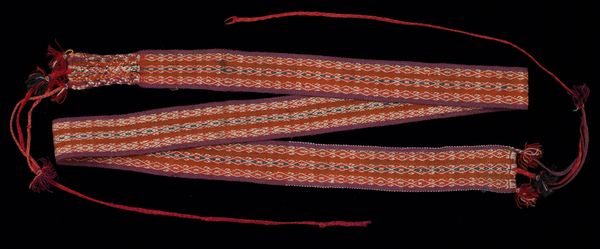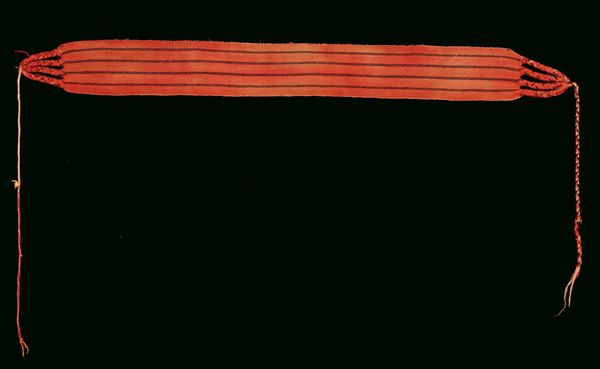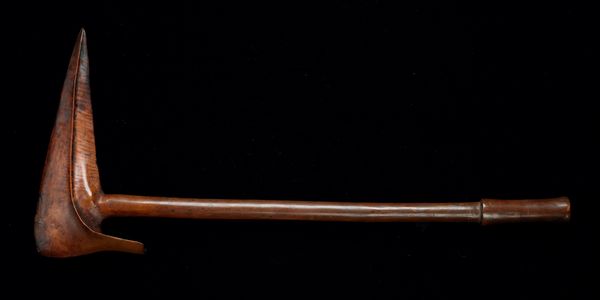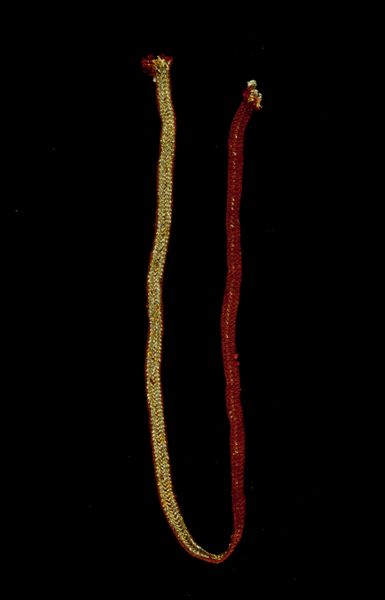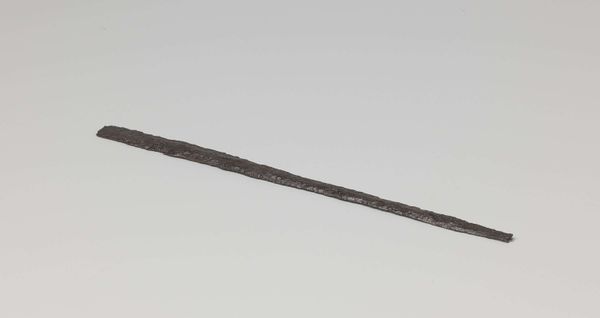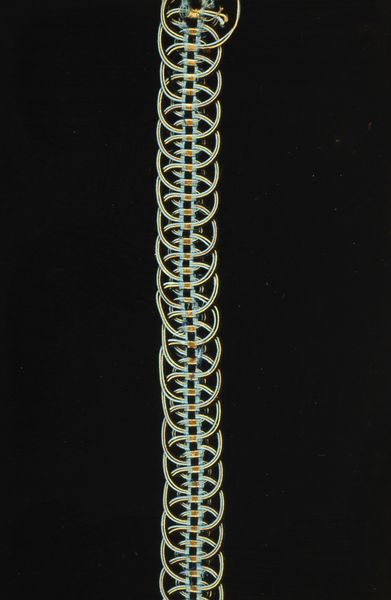
fibre-art, textile
#
fibre-art
#
random pattern
#
wave pattern
#
textile
#
abstract pattern
#
minimal pattern
#
organic pattern
#
intricate pattern
#
pattern repetition
#
decorative-art
#
layered pattern
#
funky pattern
#
repetitive pattern
Dimensions: 82 x 8 1/4 in. (208.3 x 21.0 cm)
Copyright: Public Domain
Curator: Here we have a Stole, an example of fibre-art from the 19th century, the maker of which is unfortunately unknown. Editor: It's rather striking. My initial sense is one of ornate yet subdued formality, all tied up in a crimson bow – I suppose a sort of restrained opulence? Curator: That crimson draws the eye, doesn't it? Given its form and name, we can safely assume it was worn around the shoulders, part of religious vestments. Notice how the shape is mirrored, creating symmetry in the design. The starburst motifs add visual complexity to the symmetrical whole. Editor: Right, symmetry here signals something deeper. You know, focusing on the materials - the smooth feel of that textile against skin, probably silk - helps us access something about the conditions of production. Who wove this fabric, and who embroidered those detailed, radiating stars? What were their lives like? Curator: An important question. I suspect that the star motif may point us towards the status of the wearer, referencing light or divinity associated with sacred ritual. The cultural context likely dictated specific protocols and visual vocabularies. Editor: Certainly. And, beyond any symbolism or intended purpose, consider the skill and labor invested. We’re not simply talking about a pretty pattern here. Think about the material processes—the spinning, dyeing, weaving, the detailed needlework all shaped by economic factors and artisan communities. This isn't simply a symbolic object but a material record of making and culture. Curator: Precisely. These stoles often act as symbolic and material anchors to historical practices of power. Each detail tells a tale if you're willing to listen. Editor: Yes. When you engage with the artistry embedded within this artifact, its impact resonates even louder. It is an understated example of humanity through material and skill. Curator: It's incredible how symbols converge with material culture. They represent our history while continuing a dialogue for future generations. Editor: Materiality connects us across time. This textile isn't simply beautiful. It bears a silent witness to labor, devotion, and an ever-evolving understanding of faith.
Comments
No comments
Be the first to comment and join the conversation on the ultimate creative platform.
